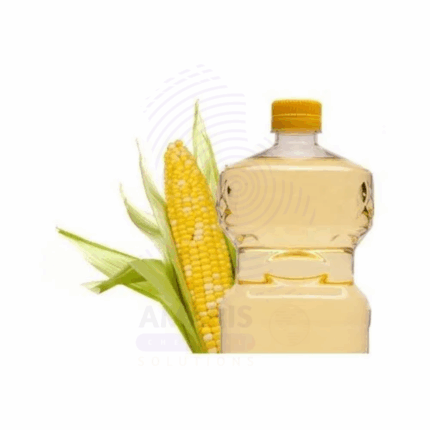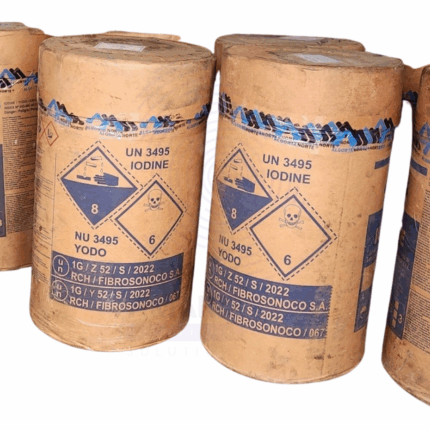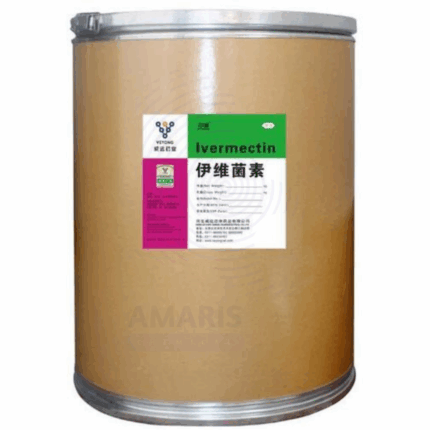Vitamin D3 BP
Vitamin D3 BP, also known as Cholecalciferol, is a fat-soluble vitamin primarily responsible for regulating calcium and phosphate metabolism in the body. It is synthesized in the skin through sunlight exposure or obtained from dietary sources and supplements. The BP (British Pharmacopoeia) grade ensures pharmaceutical quality and purity. Vitamin D3 is used in a wide range of applications, including human and veterinary medicine, supplements, fortified foods, cosmetics, and animal nutrition.
Vitamin D3 BP
Primary Uses
Pharmaceutical Industry
- Therapeutic Supplement: Used in oral tablets, soft gels, and injectables to prevent and treat vitamin D3 deficiency, rickets, osteomalacia, and hypocalcemia.
- Bone Health Formulations: Included in calcium-D3 combinations for treating osteoporosis and maintaining bone density.
- Hormonal Regulation: Used in treatments affecting parathyroid hormone levels and calcium metabolism.
Nutraceuticals & Dietary Supplements
- General Wellness: Common in multivitamin and immune-boosting supplements for its role in bone, muscle, and immune health.
- Sports & Active Nutrition: Added to products aimed at enhancing muscle function and recovery in athletes.
Food & Beverage Industry
- Food Fortification: Enriched in dairy products, cereals, margarine, plant-based milk, and infant formula to combat widespread vitamin D deficiency.
Secondary Uses
Veterinary Medicine
- Animal Supplementation: Used in formulations to prevent rickets, bone deformities, and reproductive issues in livestock, poultry, and pets.
- Feed Fortification: Added to compound feed premixes to support growth, bone strength, and calcium utilization.
Cosmetics & Personal Care
- Skin Health: Occasionally included in skin creams and lotions for its anti-inflammatory properties and role in supporting skin barrier function.
- Anti-Aging Products: Used in niche formulations targeting mature or vitamin D-deficient skin.
Clinical & Hospital Use
- Parenteral Nutrition: Administered to patients on total parenteral nutrition (TPN) or those with malabsorption syndromes.
Research & Laboratory Use
- Endocrinology Studies: Used in clinical and academic research for studying calcium-phosphate homeostasis and vitamin D metabolism.
- Cell Culture: Employed in vitro for testing cell differentiation, proliferation, and receptor activity.
Basic Identification Attributes
- Chemical Name (IUPAC): (3β,5Z,7E)-9,10-secocholesta-5,7,10(19)-trien-3-ol
- Common/Trade Name: Vitamin D3, Cholecalciferol
- CAS Number: 67-97-0
- HS Code: 2936.29.00
- Synonyms: Cholecalciferol, Colecalciferol, Calciol
Physical & Chemical Properties
- Physical State: Oily liquid or crystalline solid (depending on concentration/form)
- Color & Odor: White to off-white (solid); faint odor
- Solubility: Insoluble in water; soluble in fats, oils, and alcohol
- Melting Point: 83–85 °C (for solid forms)
- Molecular Formula: C27H44O
- Molecular Weight: 384.64 g/mol
- Stability: Sensitive to light, air, and heat; requires stabilized formulations
Safety & Hazard Attributes
- GHS Classification: May cause damage to organs through prolonged or repeated exposure at high doses
- Toxicity: Low at nutritional doses; toxic in excess (hypervitaminosis D)
- Exposure Limits: No occupational exposure limit, but intake should follow regulatory guidelines
Storage & Handling Attributes
- Storage Conditions: Store in a cool, dry place protected from light and oxygen
- Container Type: Amber glass bottles or nitrogen-flushed drums
- Shelf Life: 24–36 months when stored properly
- Handling Precautions: Avoid direct contact and exposure to air and light; handle under inert conditions if necessary
Regulatory & Compliance Attributes
- Complies with: BP, USP, EP, and FCC specifications
- Manufactured under: GMP and ISO-certified processes
- Approved in: Human and veterinary pharmaceuticals, dietary supplements, food fortification
- Meets Requirements for: WHO, Codex Alimentarius, EFSA, FDA, and other global regulatory authorities
Environmental & Health Impact
- Biodegradability: Expected to degrade under environmental conditions
- Ecotoxicity: Low in typical use concentrations
- Bioaccumulation: Not expected to bioaccumulate significantly
Safety Handling Precautions
- PPE Required: Gloves, safety goggles, and lab coat recommended
- Handling Guidelines: Minimize exposure to light, oxygen, and heat; avoid inhalation of powders (in concentrated premix)
- Storage Measures: Use light-resistant and airtight containers; refrigerate if required
First Aid Measures
- Inhalation: Remove to fresh air; seek medical attention if respiratory symptoms occur
- Skin Contact: Wash with soap and water
- Eye Contact: Rinse thoroughly with water for at least 15 minutes
- Ingestion: Rinse mouth; seek medical attention if large quantities ingested
Firefighting Measures
- Fire Hazards: Combustible at high temperatures
- Extinguishing Media: Use water spray, dry chemical, or CO₂
- Hazardous Combustion Products: May emit carbon oxides under fire conditions


 Preservatives(food)
Preservatives(food) Flavor Enhancers
Flavor Enhancers Acidulants
Acidulants Sweeteners
Sweeteners Antioxidants
Antioxidants Colorants(food)
Colorants(food) Nutraceutical Ingredients (food)
Nutraceutical Ingredients (food) Nutrient Supplements
Nutrient Supplements Emulsifiers
Emulsifiers
 Collectors
Collectors Dust Suppressants
Dust Suppressants Explosives and Blasting Agents
Explosives and Blasting Agents Flocculants and Coagulants
Flocculants and Coagulants Frothers
Frothers Leaching Agents
Leaching Agents pH Modifiers
pH Modifiers Precious Metal Extraction Agents
Precious Metal Extraction Agents
 Antioxidants(plastic)
Antioxidants(plastic) Colorants (Pigments, Dyes)
Colorants (Pigments, Dyes) Fillers and Reinforcements
Fillers and Reinforcements Flame Retardants
Flame Retardants Monomers
Monomers Plasticizers
Plasticizers Polymerization Initiators
Polymerization Initiators Stabilizers (UV, Heat)
Stabilizers (UV, Heat)
 Antifoaming Agents
Antifoaming Agents Chelating Agents
Chelating Agents Coagulants and Flocculants
Coagulants and Flocculants Corrosion Inhibitors
Corrosion Inhibitors Disinfectants and Biocides
Disinfectants and Biocides Oxidizing Agents
Oxidizing Agents pH Adjusters
pH Adjusters Scale Inhibitors( water)
Scale Inhibitors( water)
 Antioxidants(cosmetic)
Antioxidants(cosmetic) Emollients
Emollients Fragrances and Essential Oils
Fragrances and Essential Oils Humectants
Humectants Preservatives
Preservatives Surfactants(cosmetic)
Surfactants(cosmetic) Thickeners
Thickeners UV Filters
UV Filters
 Fertilizers
Fertilizers Soil Conditioners
Soil Conditioners Plant Growth Regulators
Plant Growth Regulators Animal Feed Additives
Animal Feed Additives Biostimulants
Biostimulants Pesticides (Herbicides, Insecticides, Fungicides)
Pesticides (Herbicides, Insecticides, Fungicides)
 Active Pharmaceutical Ingredients (APIs)
Active Pharmaceutical Ingredients (APIs) Excipients
Excipients Solvents(pharmaceutical)
Solvents(pharmaceutical) Antibiotics
Antibiotics Antiseptics and Disinfectants
Antiseptics and Disinfectants Vaccine Adjuvants
Vaccine Adjuvants Nutraceutical Ingredients (pharmaceutical)
Nutraceutical Ingredients (pharmaceutical) Analgesics & Antipyretics
Analgesics & Antipyretics
 Analytical Reagents
Analytical Reagents Solvents(lab)
Solvents(lab) Chromatography Chemicals
Chromatography Chemicals Spectroscopy Reagents
Spectroscopy Reagents microbiology-and-cell-culture-reagents
microbiology-and-cell-culture-reagents Molecular Biology Reagents
Molecular Biology Reagents Biochemical Reagents
Biochemical Reagents Inorganic and Organic Standards
Inorganic and Organic Standards Laboratory Safety Chemicals
Laboratory Safety Chemicals Specialty Laboratory Chemicals(Special Laboratory Equipment)
Specialty Laboratory Chemicals(Special Laboratory Equipment)
 Demulsifiers
Demulsifiers Hydraulic Fracturing Fluids
Hydraulic Fracturing Fluids Scale Inhibitors(oil)
Scale Inhibitors(oil) Surfactants(oil)
Surfactants(oil) Drilling Fluids
Drilling Fluids
 Dyes and Pigments
Dyes and Pigments Bleaching Agents
Bleaching Agents Softening Agents
Softening Agents Finishing Agents
Finishing Agents Antistatic Agents
Antistatic Agents
 Admixtures
Admixtures Waterproofing Agents
Waterproofing Agents Sealants and Adhesives
Sealants and Adhesives Curing Compounds
Curing Compounds Concrete Repair Chemicals
Concrete Repair Chemicals Anti-Corrosion Coatings
Anti-Corrosion Coatings
 Surfactants(cleaning)
Surfactants(cleaning) Builders
Builders Enzymes
Enzymes Solvents (Cleaning)
Solvents (Cleaning) Fragrances
Fragrances
 Electronic Chemicals
Electronic Chemicals Catalysts
Catalysts Lubricants
Lubricants Photographic Chemicals
Photographic Chemicals Refrigerants
Refrigerants Automotive chemicals
Automotive chemicals Pyrotechnic Chemicals
Pyrotechnic Chemicals
 Biodegradable Surfactants
Biodegradable Surfactants Bio-based Solvents
Bio-based Solvents Renewable Polymers
Renewable Polymers Carbon Capture Chemicals
Carbon Capture Chemicals Wastewater Treatment Chemicals
Wastewater Treatment Chemicals
 Pigments
Pigments Solvents(paint)
Solvents(paint) Specialty Coatings
Specialty Coatings Binders/Resins
Binders/Resins Additives
Additives Driers
Driers Anti-Corrosion Agents
Anti-Corrosion Agents Functional Coatings
Functional Coatings Application-Specific Coatings
Application-Specific Coatings
 Fresh Herbs
Fresh Herbs Ground Spices
Ground Spices Whole Spices
Whole Spices Spice Blends
Spice Blends Dried Herbs
Dried Herbs
 Leavening Agents
Leavening Agents Dough Conditioners
Dough Conditioners Flour Treatments
Flour Treatments Fat Replacers
Fat Replacers Decoratives
Decoratives Preservatives(baking)
Preservatives(baking)
 Plasticizers & Softeners
Plasticizers & Softeners Reinforcing Agents
Reinforcing Agents Adhesion Promoters
Adhesion Promoters Vulcanizing Agents
Vulcanizing Agents Antidegradants
Antidegradants Blowing Agents
Blowing Agents Fillers & Extenders
Fillers & Extenders Accelerators & Retarders
Accelerators & Retarders
























